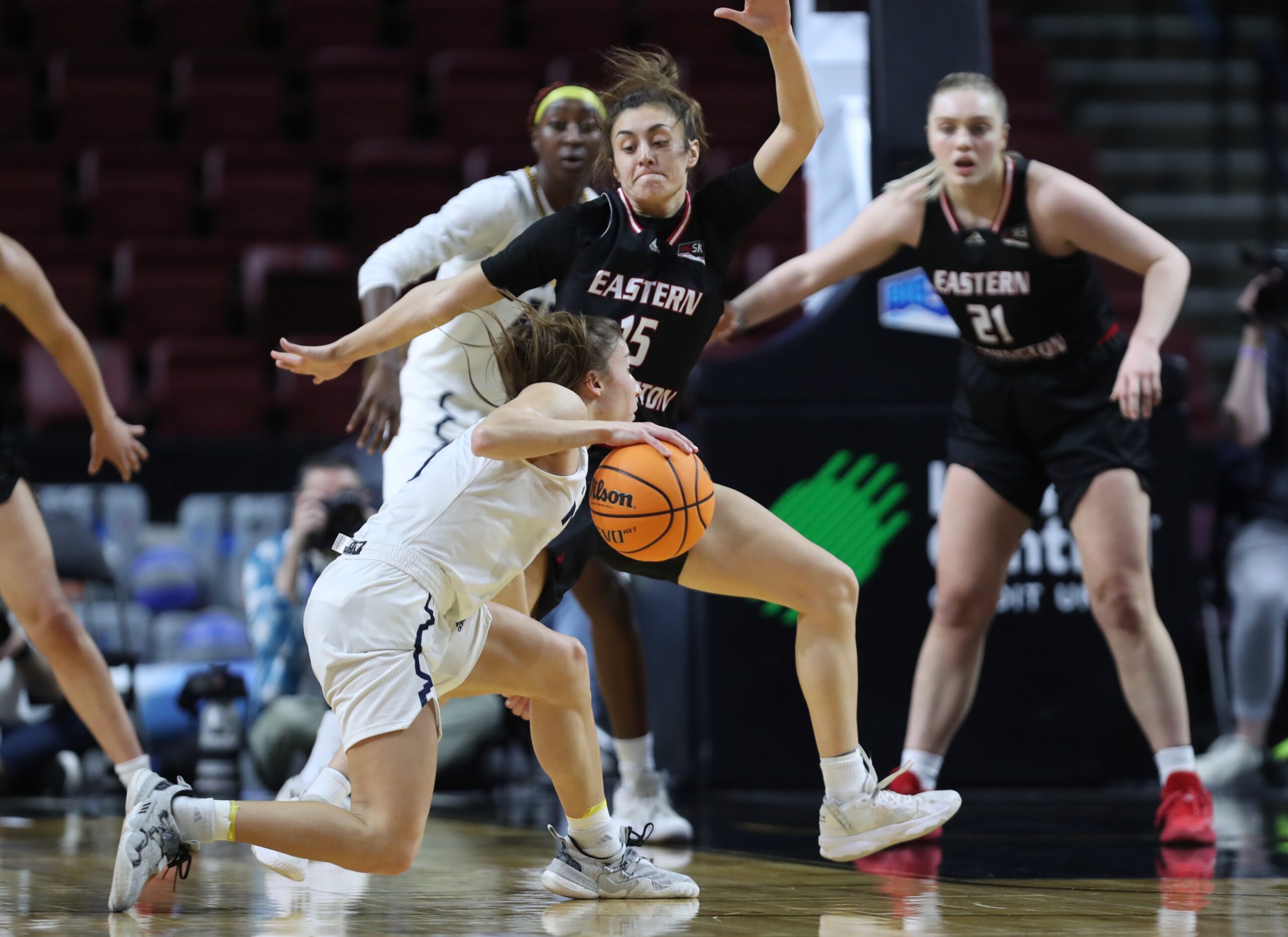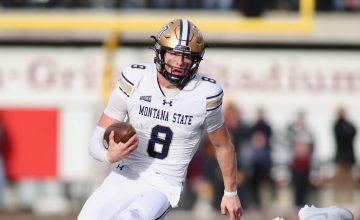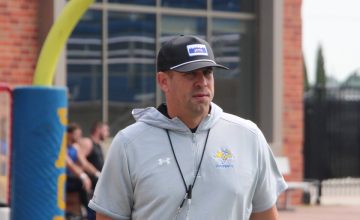The Big Sky Conference slate is to its midpoint for men’s and women’s basketball. Last season, Northern Arizona, Sacramento State and Montana State shared the league title. This season, NAU is out in front through 10 games with a 9-1 mark while MSU has kept pace with a 7-3 league record. Sac has fallen off the pace and has just one league victory thus far. Eastern Washington, the preseason favorites, is also a contender that sits at 8-2 while Montana, despite some ups and downs in the first half, is tied for third with the rival Bobcats.
Why are we doing this? Well, because we like to give you sweet content, for one, and also it’s a handy way to check back in on every team at the halfway point, and gather scattered thoughts about the league from the first half in one place. A couple notes before we begin:
– A lot of thought went into this, but it’s for fun, meant to spark discussion rather than provoke argument. It’s also just my opinion. Reasonable people can disagree. Several of the choices are agonizingly close. I’ve tried to make clear below which ones those are. Eventually, you have to put somebody on the first team and somebody on the second, or off altogether. That doesn’t mean I think those players are bad.
– I’m using the preseason ballot format for all-conference – that is, one league MVP, who also goes on the all-conference first team along with five other players. Then five on the second team, giving us 11 all-conference players altogether. I’m also not using strict positional requirements for the teams – if you could throw them on the floor together and it doesn’t look ridiculous, that’s good enough for me. I’ll also give my top three for MVP, Freshman of the Year and Newcomer of the Year. I’m not doing Defensive Player of the Year because, frankly, I don’t think I’m qualified to make that pick without watching a lot more Big Sky basketball than the already appalling amount I’m currently watching.
– It’s not difficult to pick up on my innate biases if you read the piece, but I’ll list a couple here, including my primary one: in basketball, team success matters a lot when picking all-conference, because it shows that a player can have an impact on winning, which after all is the point. Obviously there are plenty of other considerations – the rest of the roster, the coach, etc. – but generally speaking it’s difficult for me to consider a player on a bad team one of the five best players in the conference. At the same time, I’d need a good reason to say that the best team in the conference doesn’t have a player worthy of first-team consideration. I also like players who contribute in multiple areas of the game, not just scoring.
MVP
- Jamie Loera, Eastern Washington
- Sophie Glancey, Northern Arizona
- Dani Bartsch, Montana

A weird year with very few established stars returning and several teams contending at the top of the conference means a lot of leeway for personal opinion on a ballot like this. None of the top four scorers in the league make my top three (Glancey is fifth). Heck, Bartsch is fifth on her own team in scoring. Loera is behind her teammate Aaliyah Alexander.
Speaking of Loera, I said last year that I just couldn’t support any point guard, for any level of all-conference recognition, who was shooting under 40% from the field, no matter what else she brought to the table. Well, this year Loera is just barely on the right side of that line (seriously, she’s at 40.3%). More importantly, she’s become someone who has to be guarded from behind the arc, shooting 43.6% from 3-point range this year compared to 29.0% last year.
The reigning Defensive MVP is still the best defensive guard in the league, averaging 2.3 steals. She’s the best floor general in the league, averaging 5.4 assists with an assist-to-turnover ratio above two. She’s averaging 5.9 rebounds, third in the league among guards behind Idaho State’s Kacey Spink and Idaho’s Kennedy Johnson.
A super senior, Loera is the leader of an Eastern Washington team that still has the top point differential in the conference, even with a recent two-game losing streak dropping the Eagles behind Northern Arizona in the standings at the mid-point. She plays an expressive, fun-loving style on the court that’s a joy to watch. I think that in a more normal year with different competition, her inconsistent shooting – that’s still a ton of empty possessions – would have her lower down on this list. This year, I’m inclined to agree with her coach, Joddie Gleason, who said that Loera was the best player in the league after her 19-point, 11-rebound double-double helped EWU to a bounceback win against Montana over the weekend.
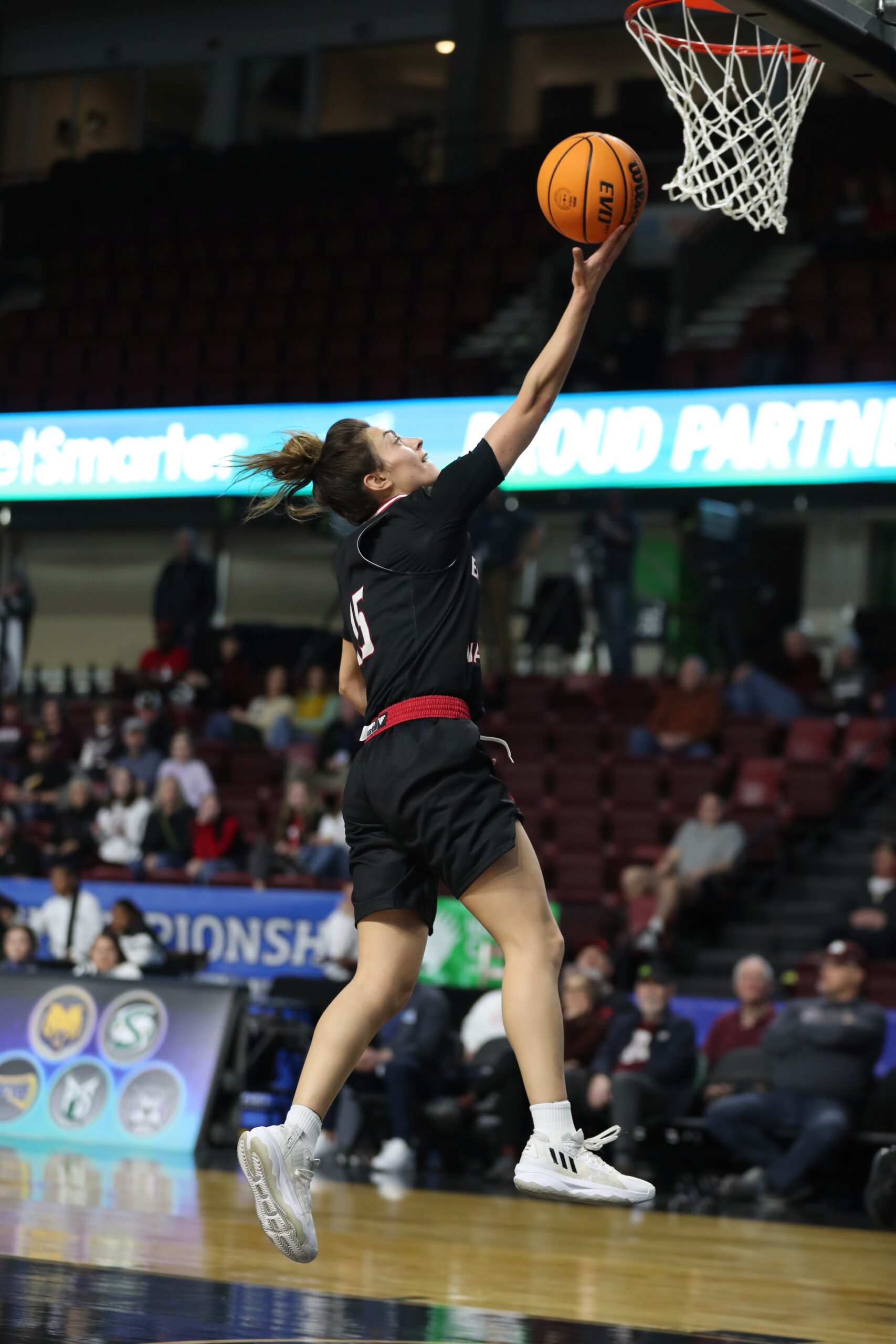
If I was wrong about Loera last year, I was right about Glancey, who I thought could have gotten more love in the Freshman of the Year race. As a sophomore this season, she’s leading the first-place Lumberjacks in scoring, rebounding and blocked shots, and is the top five in the conference in all three categories. She’s both tough and skilled in the post, is shooting well over 50% and has scored in double figures in nine out of 10 conference games. This week’s rematch against Montana, the only Big Sky team to beat NAU, could put her in the top spot.
Speaking of Montana, you could consider about four Lady Griz for the final spot here (in addition to EWU’s Alexander, Northern Colorado’s Delaynie Byrne and Hannah Simental, NAU’s Emily Rodabaugh and Montana State’s Madison Hall). From that group – even among her teammates – I wouldn’t expect Bartsch to leap to the top of anyone’s mind. Carmen Gfeller, who’s been around forever, is leading the Lady Griz in scoring and blocked shots. Maggie Espenmiller-McGraw has been one of the best high-volume 3-point shooters in the country. Mack Konig and Gina Marxen are a two-headed point guard tandem that are both averaging more points than Bartsch.
But here’s the thing – the Lady Griz don’t need scoring. Actually, I should qualify that: Against the bottom half of the league, the Lady Griz don’t need any more scoring – and against the top half of the league, none of the other players has shown themselves to be a consistent, go-to scorer in a way that would separate themselves from Bartsch.
On the other end, Bartsch is the best rebounder and the best defensive player in the league (the latter will remain true even if/when Loera wins DPOY over her because of her steal numbers). With her 6-foot-2 frame, long arms and quickness, she’s also the most versatile defensive player in the league, able to guard 1 through 5, and is the only player in the top 10 in the conference in both blocks and steals.
Bartsch, who’s shooting 48.8% from the field and 42.2% from 3-point range, has also been Montana’s most efficient offensive player (Gfeller is shooting a higher percentage but Bartsch is shooting better from 3, which gives her a higher true shooting percentage). For a team that has plenty of players who can go get a bucket, an all-world defender and rebounder who doesn’t use many possessions but can score efficiently when the ball gets to her is immensely valuable. That’s what Bartsch is, that’s why she leads the Lady Griz in minutes and that’s why she’s listed here.
ALL-CONFERENCE FIRST TEAM
Jamie Loera, Eastern Washington
Sophie Glancey, Northern Arizona
Dani Bartsch, Montana
Aaliyah Alexander, Eastern Washington
Madison Hall, Montana State
Delaynie Byrne, Northern Colorado
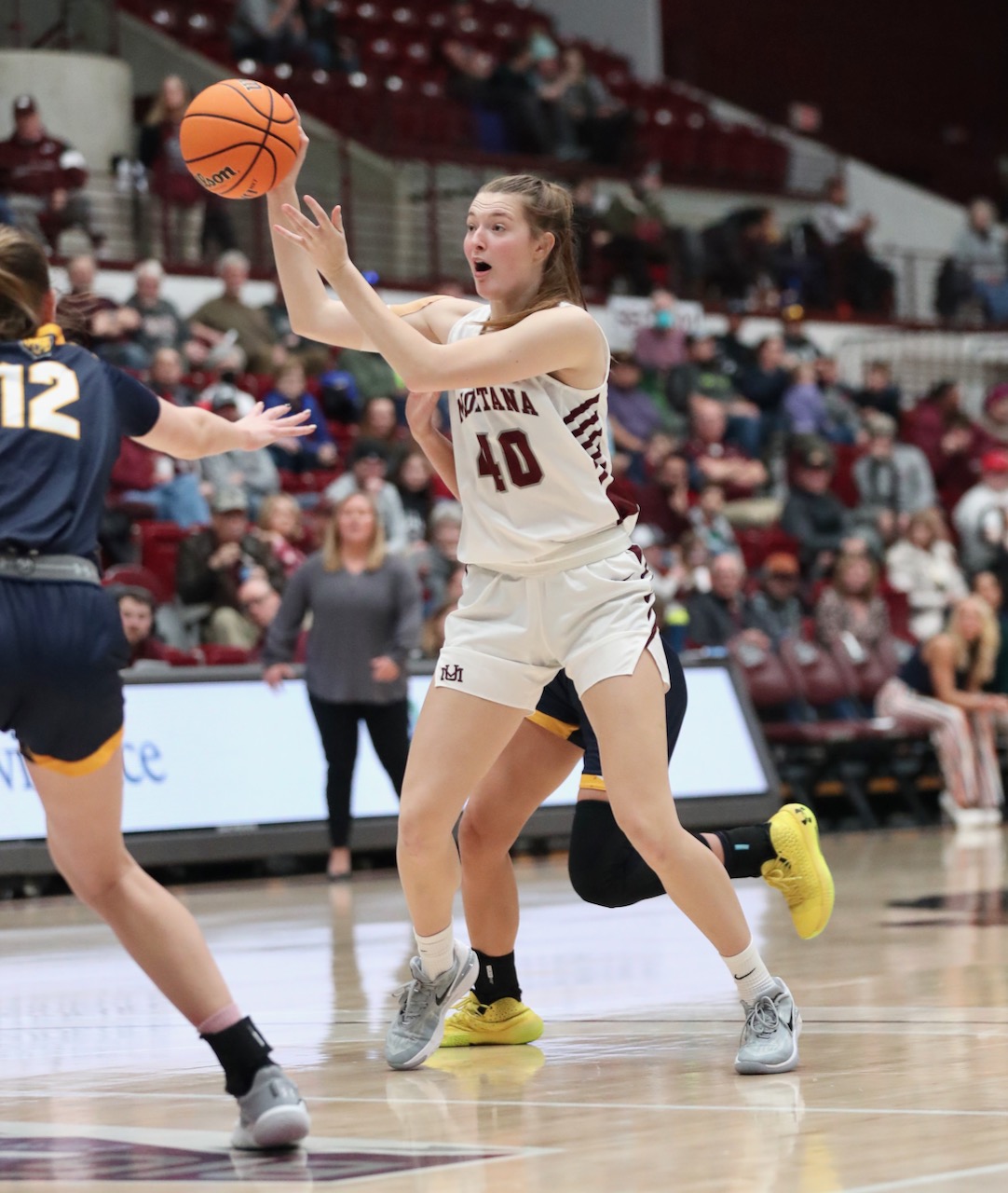
The first three were covered above. Alexander was an easy call, a sophomore averaging 15.8 points per game with a tricky, physical bag of moves. With the game on the line against the Lady Griz, the Eagles went to her, not Loera, for the clinching turnaround jumper.
On pure stats, Hall is nowhere near this list. But she’s been the emotional soul of a Montana State team that’s tied for third place in the conference and hasn’t lost at home in Big Sky play. Everybody around the Bobcats program would say the same thing. After coming back for her final year of eligibility, she’s been an indispensable source of leadership for a Bobcats team that’s battled injuries – they’re starting a freshman at point guard and have had to pull the redshirts off two other freshmen.
After five years together, Hall understands exactly what head coach Tricia Binford wants, and her unyielding effort on both ends sets an ideal example for all of Montana State’s young players. If I’m making a “vibes” pick, the vibes have to be immaculate. With Hall, they are. Put simply, I don’t think the Bobcats would be anywhere close to 7-3 in conference without her. And she’s still averaging 10.6 points and over a steal per game, pretty fair numbers at Montana State, which doesn’t score a ton and wins with suffocating defense.

At Northern Colorado, Byrne has taken a huge step up with her 3-point shooting (34.6% last year to 41.3% this year) and her play-making (1 assist per game to 2.4). Those two developments combined have taken a great deal of pressure off Hannah Simental, who was the Bears’ only decent shooter or play-maker a year ago, and that’s taken Northern Colorado up a couple levels in Kristen Mattio’s third season.
Others: Gfeller at Montana and Emily Rodabaugh at Northern Arizona are playing up to their well-established levels, which always makes them a threat for this list.
I really wanted to get Kacey Spink at Idaho State on the first team. Like Hall for Binford at Montana State, she’s the on-court extension of Seton Sobolewski with the Bengals, an on-court wrecking ball who’s a perfect fit for a team that wants Mad Max levels of destruction and chaos. Spink isn’t even averaging double figures in points, but, as a 5-9 guard, she’s leading the conference in offensive rebounds, is fifth in rebounding overall, is fourth in assists and is second in steals behind Loera – and the Bengals, like Montana State, are winning a lot more than their roster says they should.
Simental has been just about as impactful as Byrne has for Northern Colorado, and KJ Limardo is leading Montana State in points and rebounds, although I don’t think her off-the-court impact is as high as Hall’s. I know Esmeralda Morales at Portland State is a good player because she’s proved that in the league before. She’s leading the Big Sky in scoring by nearly two points a game – but the Vikings are 0-fer in conference play, which is disqualifying. Summah Hanson is averaging 14 and eight for a Sac State team whose only conference win is against Portland State. If it came down to it, I’d rather have Morales – and I’d rather have Kennedy Johnson, who’s averaging 12.7 points and 6.5 rebounds for a feisty Idaho team, over both of them.
Second team: Carmen Gfeller (Montana), Emily Rodabaugh (Northern Arizona), Kacey Spink (Idaho State), Hannah Simental (Northern Colorado), KJ Limardo (Montana State)
NEWCOMER OF THE YEAR
- Maggie Espenmiller-McGraw, Montana
- Kennedy Johnson, Idaho
- Tasia Jordan, Idaho State
In the men’s league, the Newcomer of the Year race is stacked, while there are barely any viable candidates for Freshman of the Year. In the women’s league, it’s the opposite – and, in fact, freshmen would take up a couple spots on this list if they were eligible. By my count, just four of the conference’s top 25 scorers are non-freshman newcomers to the league (I didn’t count Leia Beattie and Grace Beasley, both of whom are new to Northern Arizona but not, of course, to the conference).
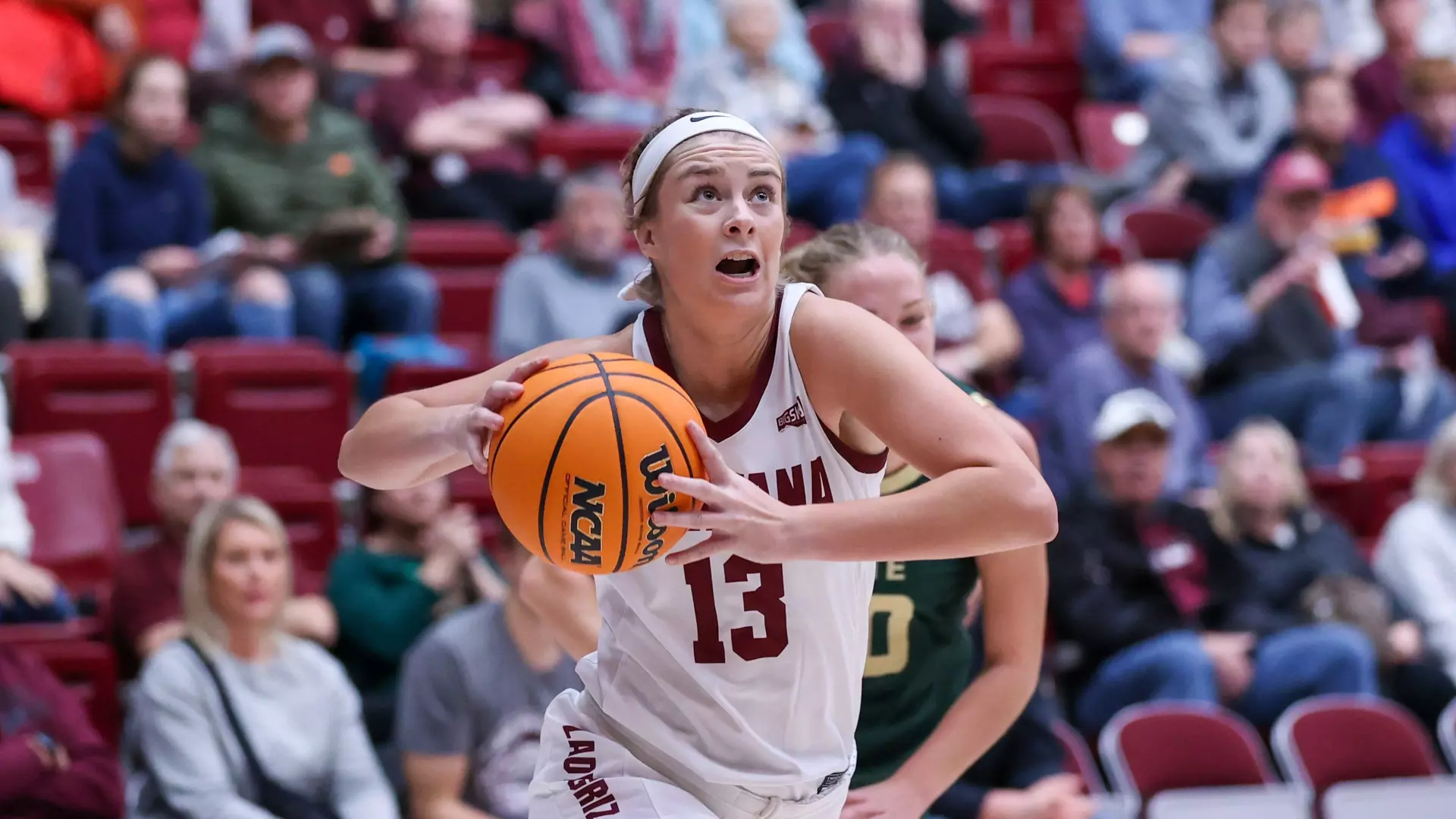
Espenmiller-McGraw (MEM for short) is an unassuming Iowa State transfer who never got much run with the Cyclones but might as well be shooting with the flaming basketball from NBA Jam. Of course, she gets a ton of open looks in Montana’s dangerous, exceptionally well-spaced offense, but on accuracy and volume, she’s one of the best shooters I’ve seen in the conference in a while.
Johnson, mentioned above, is just solid for Idaho, a necessary trait for the Vandals as they claw back to respectability in Carrie Eighmey’s first year. She was at UC Santa Barbara for a couple years before getting to Moscow.
Although I was bemoaning the lack of options for this award at the top, Jordan is third by just a hair over Montana’s MJ Bruno. Like Loera, Jordan is a point guard who doesn’t shoot that well – just 42.2% on the year – but shot creation can be valuable even if it’s inefficient, and Jordan does enough other things well to make a real impact. She’s averaging just over 11 points and five rebounds per game, and is top 12 in the league in both blocks and steals.
Bruno has started every game for the Lady Griz, brings necessary intensity on the defensive end – after Bartsch, she’s their second-best defender – and is shooting it really well from outside, albeit on low volume. She’s a damn good player, just without the responsibility of some of her teammates.
FRESHMAN OF THE YEAR
- Natalie Picton, Montana State
- Summah Hanson, Sacramento State
- Tatum West, Northern Colorado
Hanson has the numbers – 14 points and eight rebounds a game – more or less by default for a Sac State team that doesn’t have much at all around her. It’s a brutal learning curve for a freshman – expected to lead a two-win team – but you can see the outline of a very good stretch 4, and she’s a good piece for the Hornets to have as they try to rebuild under Aaron Kallhoff.
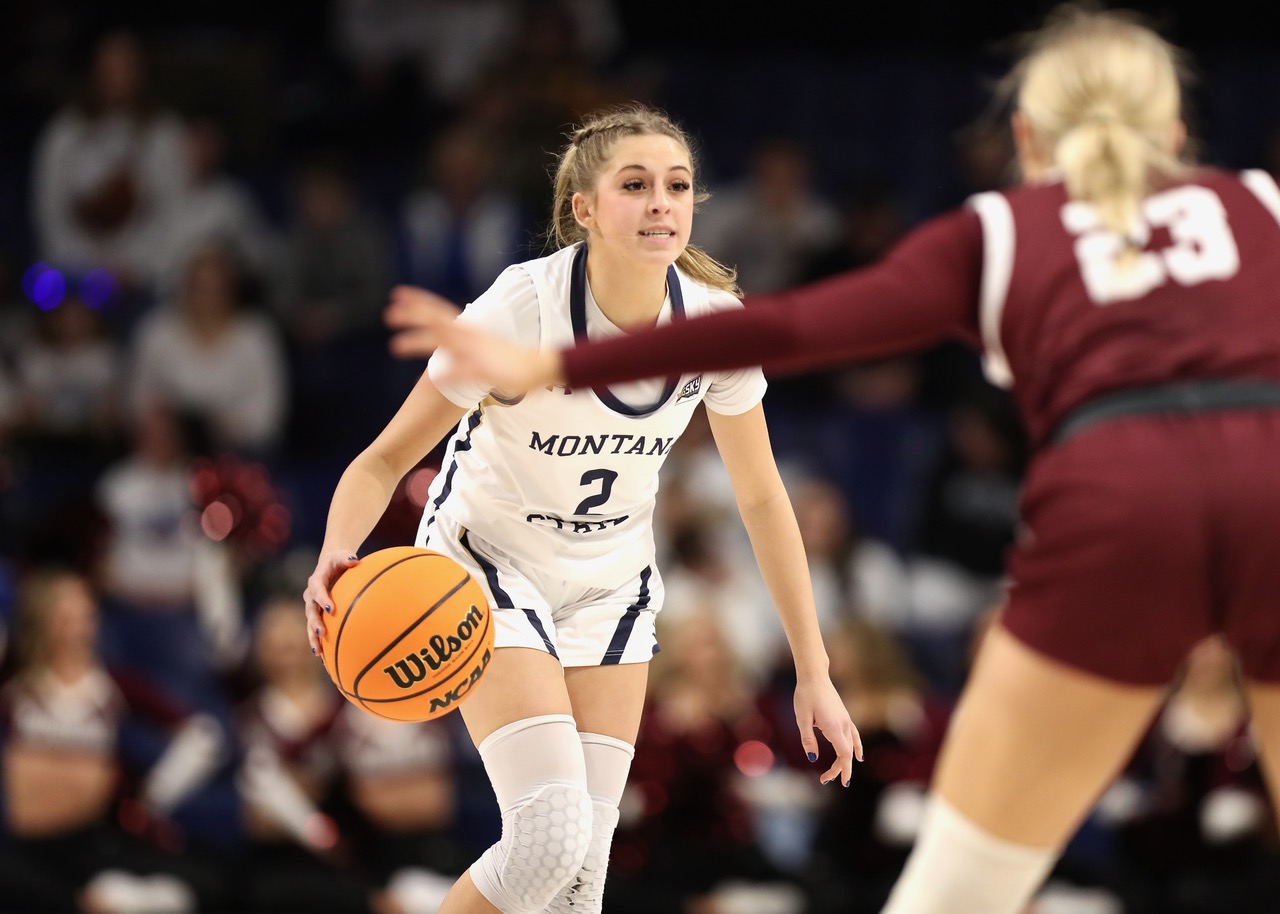
Hanson’s stats, of course, dwarf Picton’s, but the Montana State guard is surviving under an immense degree of pressure running the point for a contender. It’s one of the more impressive freshman performances I’ve seen recently, and comparable to Mack Konig’s award-winning freshman campaign last year for Montana – Konig’s stat line looks better, but then again, she had more talent around her.
I know I dogged on Jamie Loera’s shooting percentage earlier. Picton’s, at 31.2%, is below awful. She has an assist-to-turnover ratio under one, which is also not good. But she gets some of that back with harassing on-ball defense that keys the Bobcats on that end, and she’s able to get them into their offense enough to win games. That sounds like a low bar. It is – but most true freshman point guards can’t clear it.
West, who’s averaging 7.1 points and 4.2 rebounds for Northern Colorado, takes the third spot over a host of other candidates, including Macey Huard at Montana, Isobel Bunyan at Montana State, Nika Lokica at Idaho State and Taylor Smith at Weber State.

